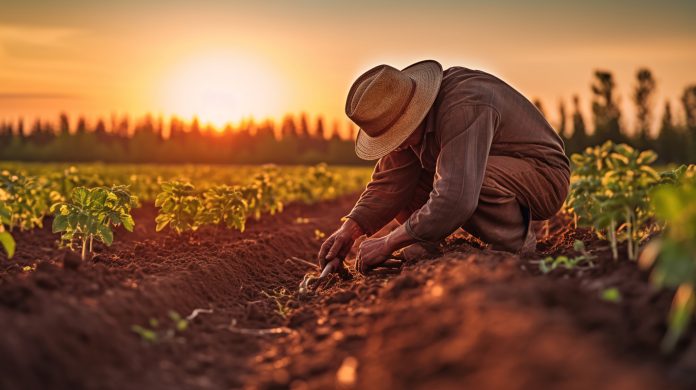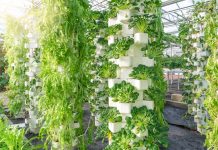Sustainable farming practices are becoming increasingly essential as the world grapples with climate change, population growth, and resource depletion. These practices aim to balance the need for food production with environmental health, economic viability, and social equity. This article explores the current trends in sustainable farming and the future prospects for this vital aspect of agriculture.
Current Trends in Sustainable Farming
1. Organic Farming
Organic farming emphasizes the use of natural inputs and processes to enhance soil health and biodiversity. It avoids synthetic fertilizers and pesticides, focusing instead on organic fertilizers, crop rotations, and biological pest control.
- Benefits: Reduced chemical runoff, improved soil fertility, and healthier ecosystems.
- Challenges: Often higher labor costs and lower yields compared to conventional farming.
2. Agroforestry
Agroforestry integrates trees and shrubs into crop and livestock systems. This practice enhances biodiversity, improves soil structure, and provides additional income sources through timber and non-timber forest products.
- Benefits: Enhanced biodiversity, improved soil health, and diversified income streams.
- Challenges: Requires longer-term planning and investment.
3. Conservation Tillage
Conservation tillage minimizes soil disturbance by reducing the frequency and intensity of plowing. This practice helps maintain soil structure, reduce erosion, and increase water retention.
- Benefits: Reduced soil erosion, improved water retention, and lower fuel usage.
- Challenges: Can require specialized equipment and may lead to initial yield reductions.
4. Integrated Pest Management (IPM)
IPM combines biological, cultural, physical, and chemical tools to manage pests in an environmentally and economically sustainable way. It emphasizes the use of natural predators and biopesticides over synthetic chemicals.
- Benefits: Reduced chemical usage, lower pest resistance, and improved crop health.
- Challenges: Requires detailed knowledge of pest dynamics and can be labor-intensive.
5. Regenerative Agriculture
Regenerative agriculture focuses on restoring and enhancing soil health through practices such as cover cropping, crop rotation, and reduced tillage. It aims to sequester carbon, improve biodiversity, and increase resilience to climate change.
- Benefits: Enhanced soil health, increased carbon sequestration, and improved resilience.
- Challenges: Transitioning to regenerative practices can be complex and may require significant changes in management.
Future Prospects for Sustainable Farming
1. Technological Advancements
Innovations in technology will play a crucial role in the future of sustainable farming. Precision agriculture, for example, uses data analytics, GPS, and IoT devices to optimize resource use and minimize environmental impact. Similarly, advancements in biotechnology, such as CRISPR and gene editing, hold promise for developing crops that require fewer inputs and are more resilient to environmental stresses.
2. Policy and Incentives
Government policies and incentives will be pivotal in promoting sustainable farming practices. Subsidies for sustainable practices, carbon credits for carbon sequestration, and regulations limiting the use of harmful chemicals can drive widespread adoption. International cooperation and agreements can also foster a global movement towards sustainable agriculture.
3. Consumer Awareness and Demand
As consumer awareness of environmental and health issues grows, the demand for sustainably produced food is increasing. This shift in consumer preferences is encouraging more farmers to adopt sustainable practices to meet market demand. Certification schemes like organic and Fair Trade labels are helping consumers make informed choices, further promoting sustainable farming.
4. Education and Training
Education and training programs for farmers are essential for the adoption of sustainable practices. These programs can provide the knowledge and skills needed to implement new techniques and technologies effectively. Extension services, agricultural schools, and online platforms can play a significant role in disseminating this information.
5. Research and Development
Ongoing research and development are critical for the advancement of sustainable farming. Continued investment in R&D will lead to new discoveries and innovations that can make farming more efficient, resilient, and environmentally friendly. Collaborative efforts between governments, research institutions, and the private sector will be key to driving progress.
For more on the latest innovations and developments in agriculture, check out the Nachrichten aus der Landwirtschaft.
Conclusion
Sustainable farming practices are essential for the future of agriculture. By adopting methods that prioritize environmental health, economic viability, and social equity, we can ensure a resilient and productive agricultural sector. The current trends and future prospects for sustainable farming are promising, with technological advancements, supportive policies, consumer demand, education, and ongoing research all playing vital roles. As we move forward, a commitment to sustainability will be crucial in addressing the challenges and opportunities that lie ahead.







